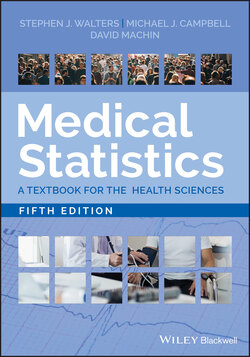Читать книгу Medical Statistics - David Machin - Страница 17
Sample Size and Power Considerations
ОглавлениеOne of the commonest questions asked of a consulting statistician is: how large should my study be? If the investigator has a reasonable amount of knowledge as to the likely outcome of a study, and potentially large resources of finance and time, then the statistician has tools available to enable a scientific answer to be made to the question. However, the usual scenario is that the investigator has either a research grant of a limited size, or limited time, or a limited pool of patients. Nevertheless, given certain assumptions the medical statistician is still able to help. For a given number of patients, the probability of obtaining effects of a certain size can be calculated. If the outcome variable is simply success or failure, the statistician will need to know the anticipated percentage of successes in each group so that the difference between them can be judged of potential clinical relevance. If the outcome variable is a quantitative measurement, the statistician will need to know the size of the difference between the two groups, and the expected variability of the measurement. For example, in a survey to see if patients with diabetes have raised blood pressure the medical statistician might say ‘with 100 diabetics and 100 healthy subjects in this survey and a possible difference in blood pressure of 5 mmHg, with standard deviation 10 mmHg, you have a 20% chance of obtaining a statistically significant result at the 5% level’. (The term ‘statistically significant’ will be explained in Chapter 6.) This statement means that one would anticipate that in only one study in five (20%) of the proposed size would a statistically significant result be obtained. The investigator would then have to decide whether it was sensible or ethical to conduct a survey with such a small probability of success. One option would be to increase the size of the survey until success (defined as a statistically significant result if a difference of 5 mmHg or more does truly exist) becomes more probable.
